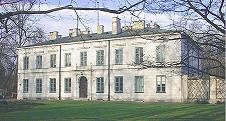Antoine-Joseph Dezallier d’Argenville i jego dzieło
Antoine-Joseph Dezallier d’Argenville and His Work
Author(s): Dorota SikoraSubject(s): Cultural history
Published by: Krajowy Ośrodek Badań i Dokumentacji Zabytków
Keywords: Antoine-Joseph Dezallier d’Argenville; Classical garden; Paris; spatial solutions; art of gardening; garden pavilions; figurative sculpture; cultivation; architectural garden decorations
Summary/Abstract: Antoine-Joseph Dezallier d’Argenville (1680–1765) is indissolubly associated with the eighteenth-century Classical garden thanks to his treatise La Théorie et Pratique du Jardinage, published in Paris in 1709. Dezallier presented assorted issues concerning garden design in mathematical and geometrical rules, lavishly illustrated with drawings (the majority by Alexandre Jean-Baptiste Le Blond) which rendered the principles expounded by him easily translatable into foreign languages and transferable to conditions other than French. The wide impact and international popularity of La Théorie et Pratique du Jardinage were linked with the adaptation of the proposed spatial solutions to the financial potential of the less prosperous social strata, and not limited to elites associated with the monarch and their closest entourage, as was the case with works by Dezallier’s predecessors. The treatise is composed of two parts: the theory of the art of gardening and practice. The first considers the principles of selecting the localisation of the residential building and the garden, the general layout of the garden, the creation of beds and parterres, the planting and cultivation of avenues, rows, and bosquets, the creation of indentations, the erection of garden pavilions, and the suitable display of figurative sculpture and other elements of architectural garden decorations. The second part deals with the application of the principles of geometry while planning gardens, conducting earth work, the construction of terraces and stairs, the transference of projects into the terrain, the selection of plants, and nursery beds. The last two chapters discuss spatial elements connected with water: fountains, cascades, pools and canals. La Théorie et Pratique du Jardinage was widely known in eighteenth-century Poland, and the principles presented therein were reflected in the gardens established at the time. The contents of the Dezallier work assumes particular significance while cond
Journal: Ochrona Zabytków
- Issue Year: 2002
- Issue No: 3-4
- Page Range: 391-403
- Page Count: 13
- Language: Polish

